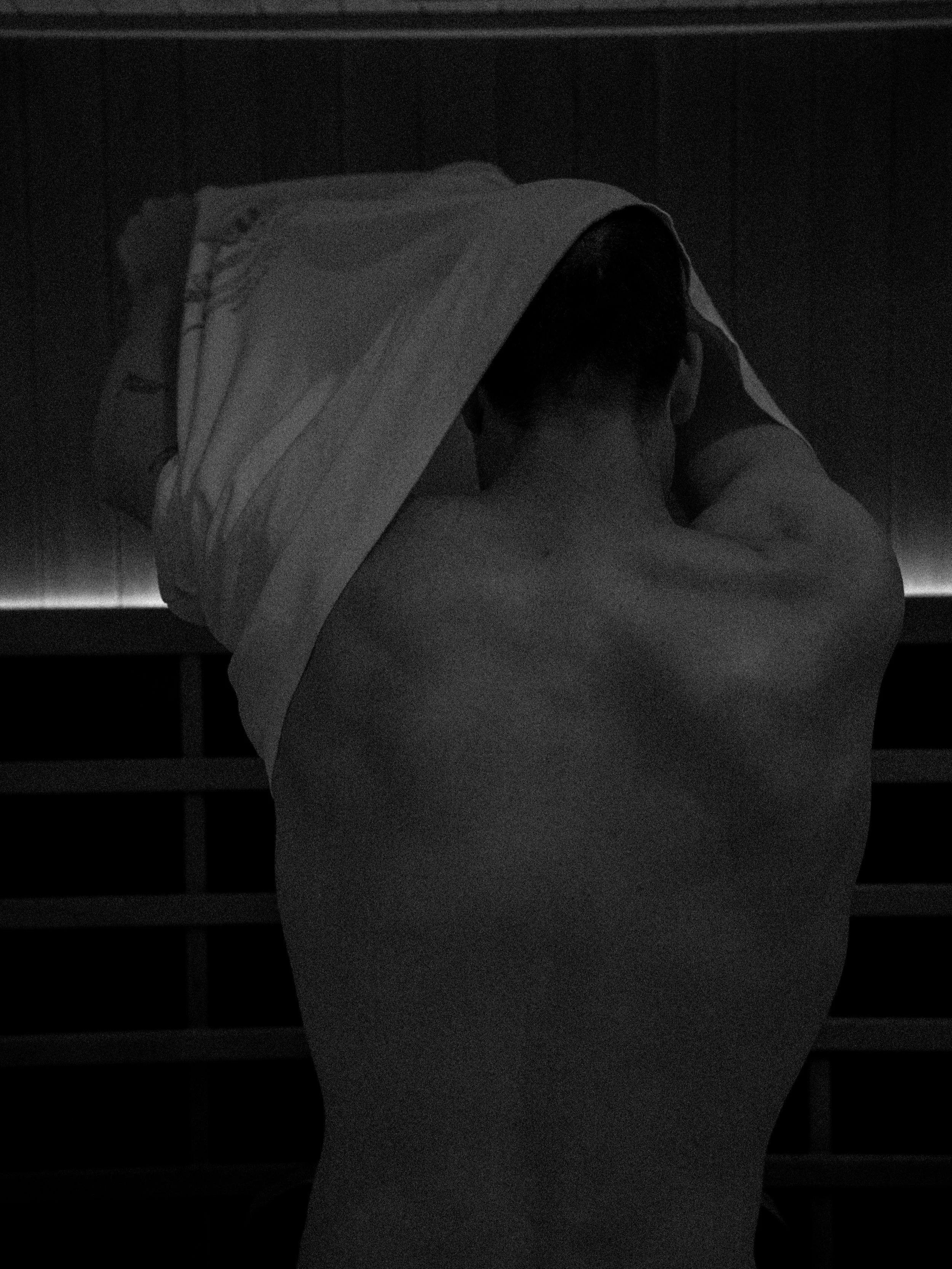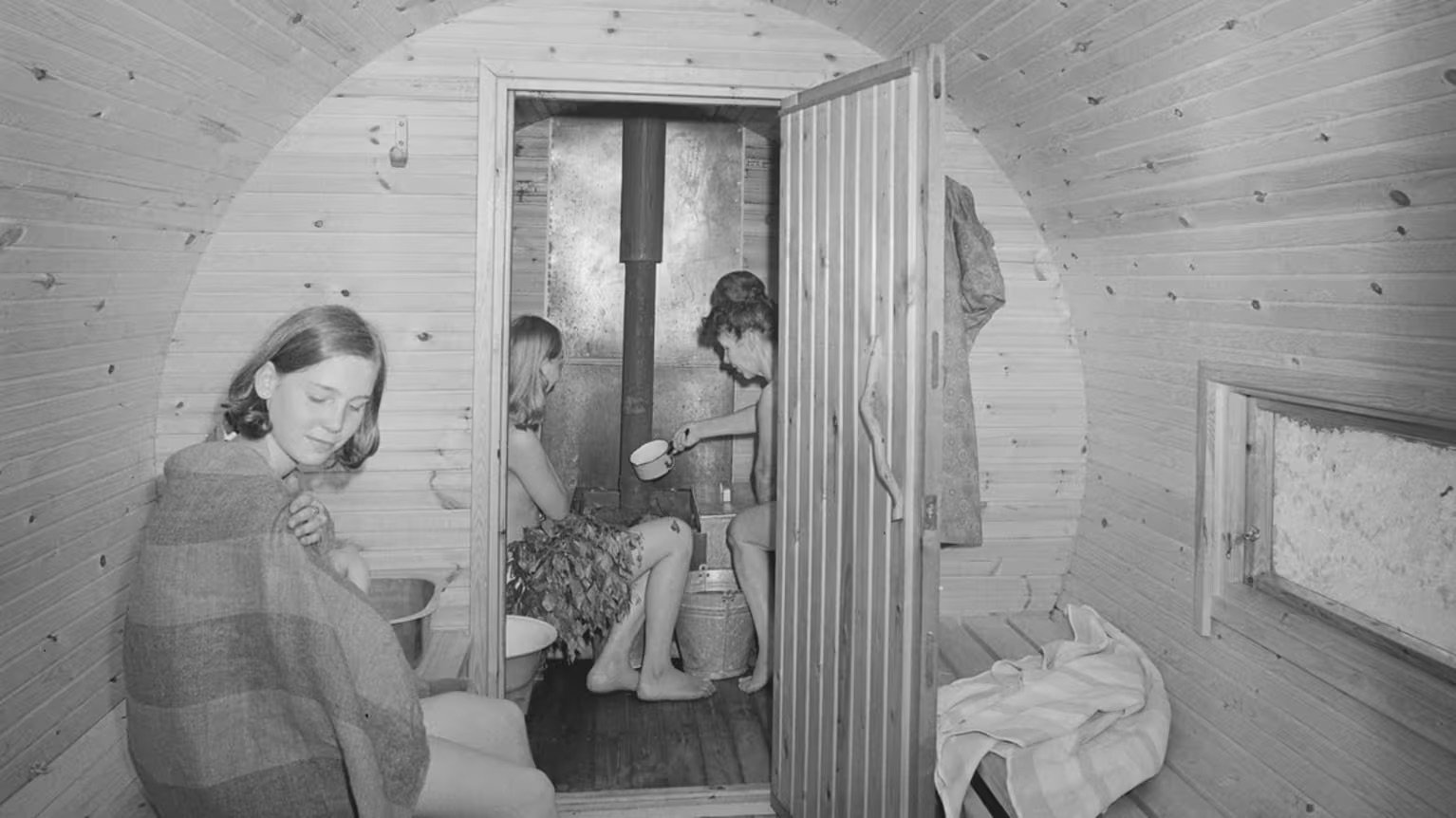Heat Therapy for Health and Vitality
History
The use of deliberate heat exposure, although becoming a trendy activity, is no recent phenomenon. In fact, it is a practice that dates back thousands of years and is renowned across many different cultures as a well established tradition. Sauna bathing is particularly revered amongst the Finnish but Russian banyas, Turkish hammams, Japanese onsens and Roman baths are all variations of the same short-term passive exposure to high temperatures.
Not too much has changed over the years with heat therapy remaining as a simple yet profound way to deeply purify and restore health to the body.
Traditionally, saunas were housed in the earth as simple ‘dugout’s’ heated by campfire stones. These heated, smokey dens in the ground originated in Finland around 2000 years ago and were seen as a cleansing place for the body and spirit. Overtime saunas evolved into wooden cabins where ladles of water were poured over an internal woodfired stove, creating a therapeutic and invigorating high-humidity environment.
Infrared saunas came into the picture during the 1960’s when Japanese Dr. Tadashi Ishikawa invented the first sauna with far infrared technology, about the same time as Finnish scientists began investigating improvements and efficiencies to their original method. Infrared saunas have since taken the world by storm with their gentle approach to heat therapy whilst still offering the same remarkable health benefits famed by the traditional method.
With the revival of bathing practices sweeping across the wellness scene, sauna sessions have become a modern ritual for health enthusiasts seeking an outlet to detoxify, enhance wellbeing and cultivate social connections.
Benefits
Detoxification
Sauna use fortifies the lymphatic system, a vital component of the circulatory, immune and metabolic systems. This system drains fluid from the cells, clearing waste and impurities in the process and works to maintain an optimal balance of fluid whilst fighting off swelling and inflammation. There are three main ways that cellular detoxification occurs through infrared sauna use; via increased blood flow, sweating and infrared wavelengths.
By stimulating blood circulation, waste material is cleared from the cells and removed via the liver, kidneys and lymphatic system. Whilst this is happening, the body’s core temperature rises and it begins to sweat in an effort to cool itself, clearing excess water, fats, salts and accumulated toxins in the process. Infrared wavelengths on the other hand, penetrate fat cells within adipose tissue causing them to vibrate and disperse, releasing heavy metals and toxins into the bloodstream to be eliminated through the body’s detoxification channels.
Cardiovascular Health
Regular sauna sessions help to maintain and strengthen heart health, reduce blood pressure, increase circulation and improve blood vessel function. The cardiovascular demand imparted by thermoregulation during a sauna session acts like a workout for the heart, bolstering it against the risk of cardiovascular diseases.
Improved Mood
Some of us may experience slight discomfort or agitation during intentional heat exposure. This can be attributed to the release of dynorphins; neuropeptides with the opposite effect to endorphins. Dynorphins are involved in the body’s stress response by sending triggers to cool the body down; as our core temperature raises, so does the feeling of dysphoria or mild unease. However, as dynorphins are released, the brain actually produces more receptors for endorphins to latch onto. By triggering this release of dynorphins, the opiod system of the body becomes sensitised and more receptive to endorphins. This feedback response is the reason behind the elated, euphoric feeling we have following a sauna session. This feeling of relief is also what is known as “the runners high”.
Muscle Recovery and Repair
Near, mid and far infrared wavelengths emitted in an infrared sauna penetrate the body and heat it from within. This warmth ultimately increases circulation and the delivery of oxygen rich blood around the body, sending additional red blood cells and nutrients to depleted muscles and tissues in need of repair. Through the process of detoxifying and reducing inflammation muscles, fibres and joints are exposed to an enhanced healing process that allows for mending of injuries and reprieve from aches, pains and stiffness.
Whilst traditional saunas have a host of therapeutic benefits, there is a clear advantage with infrared sauna use when it comes to healing the muscles and tissues of the body; with the use of far infrared technology, wavelengths are able to penetrate into the tissues creating the ideal environment for increased muscle recovery.
Immune Support
By raising the body’s core temperature, sauna use can mimic a fever response. Stimulating this natural defence mechanism helps to fortify the immune system; strengthening and accelerating its ability to rid viruses, bacteria and infections from the body. The natural preventative practice of infrared sauna use heats the body from the inside-out, allowing it to safely and comfortably reach a maximum temperature that inhibits pathogens from thriving.
Skin Health
Through profuse sweating the skin is flushed of toxins and impurities, leaving it radiant and cleansed. Nourished by the increased circulation of blood flow, skin appears youthful and revived following heat therapy. Infrared sauna use has a regenerative effect on the skin and stimulates the production of collagen and elastin, helping to generate clearer, smoother, and softer skin. As near-infrared light passes through the mitochondria of the cell it converts to adenosine triphosphate (ATP), providing the cell with energy and allowing it to intake nutrients and rid waste faster. This process encourages optimal skin condition, with enhanced renewal and regeneration.
Traditional vs Infrared Sauna
Infrared saunas heat the body directly, warming it from the inside-out, rather than heating the surrounding air first like a traditional wood fired or stove heated sauna . The infrared wavelengths are unable to be perceived by the eyes however they are experienced by the body as gentle, radiant heat that allows for vigorous sweating at a lower temperature. Typically traditional sauna sessions last for shorter periods of time as the heat sits much higher, at about 90°C, whereas infrared sauna sessions last between 30-45 minutes with a temperature of 45-60°C. By offering a dry heat, infrared saunas create a soothing environment that is generally much more tolerable and comfortable for ease of breathing and conversation.
A Note for Our Sauna Users
At TAMA we offer 30 and 45 minute infrared sauna sessions for you to switch off in private ambience. We have our Clearlight Infrared Sauna set to 60°C and encourage our guests to adjust this to a temperature they feel comfortable with. For new and first-time sauna users we suggest shorter intervals until comfortable with a full session.
For more information on our sauna sessions, or to book, click here.
written by brooke josland.


